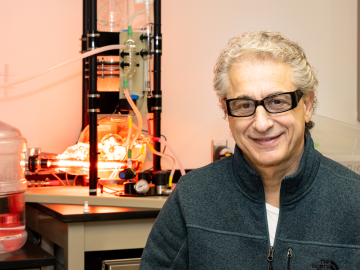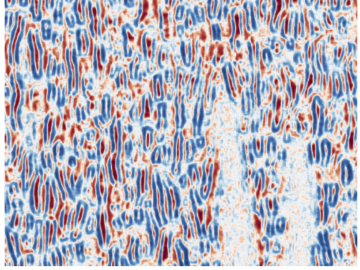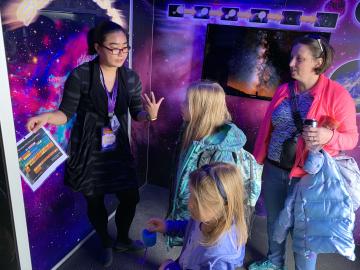Filter News
Area of Research
News Type
News Topics
- 3-D Printing/Advanced Manufacturing (5)
- Advanced Reactors (1)
- Artificial Intelligence (4)
- Big Data (2)
- Bioenergy (4)
- Biomedical (2)
- Biotechnology (1)
- Clean Water (2)
- Computer Science (12)
- Energy Storage (3)
- Environment (9)
- Exascale Computing (1)
- Grid (1)
- Machine Learning (1)
- Materials Science (4)
- Mercury (1)
- Microscopy (1)
- Nanotechnology (2)
- Neutron Science (4)
- Nuclear Energy (7)
- Physics (2)
- Polymers (1)
- Quantum Science (2)
- Space Exploration (1)
- Summit (4)
- Sustainable Energy (1)
- Transportation (3)
Media Contacts

John Katsaras, a biophysicist specializing in neutron scattering and the study of biological membranes at the Department of Energy’s Oak Ridge National Laboratory, had a rather unusual birthday party last year.

Students often participate in internships and receive formal training in their chosen career fields during college, but some pursue professional development opportunities even earlier.

Electrons in atoms are pretty talented. They can form chemical bonds, get kicked out of the atom and even “jump” to different locations based on their energetic states.

Buildings use 40 percent of America’s primary energy and 75 percent of its electricity, which can jump to 80 percent when a majority of the population is at home using heating or cooling systems and the seasons reach their extremes.

Beyond solids, liquids, gases, plasma, and other examples only accessible under extreme conditions, scientists are constantly searching for other states of matter.

Scientists at the U.S. Department of Energy’s Brookhaven National Laboratory have new experimental evidence and a predictive theory that solves a long-standing materials science mystery: why certain crystalline materials shrink when heated.

Elizabeth Herndon believes in going the distance whether she is preparing to compete in the 2020 Olympic marathon trials or examining how metals move through the environment as a geochemist at the Department of Energy’s Oak Ridge National Laboratory.

In the vast frozen whiteness of the central Arctic, the Polarstern, a German research vessel, has settled into the ice for a yearlong float.

Jason Nattress, an Alvin M. Weinberg Fellow at the Department of Energy’s Oak Ridge National Laboratory, found his calling on a nuclear submarine.

Scouts from around East Tennessee learned about supercomputing, electricity, isotopes, physics, and much more at Oak Ridge National Laboratory’s final Traveling Science Fair event of 2019




